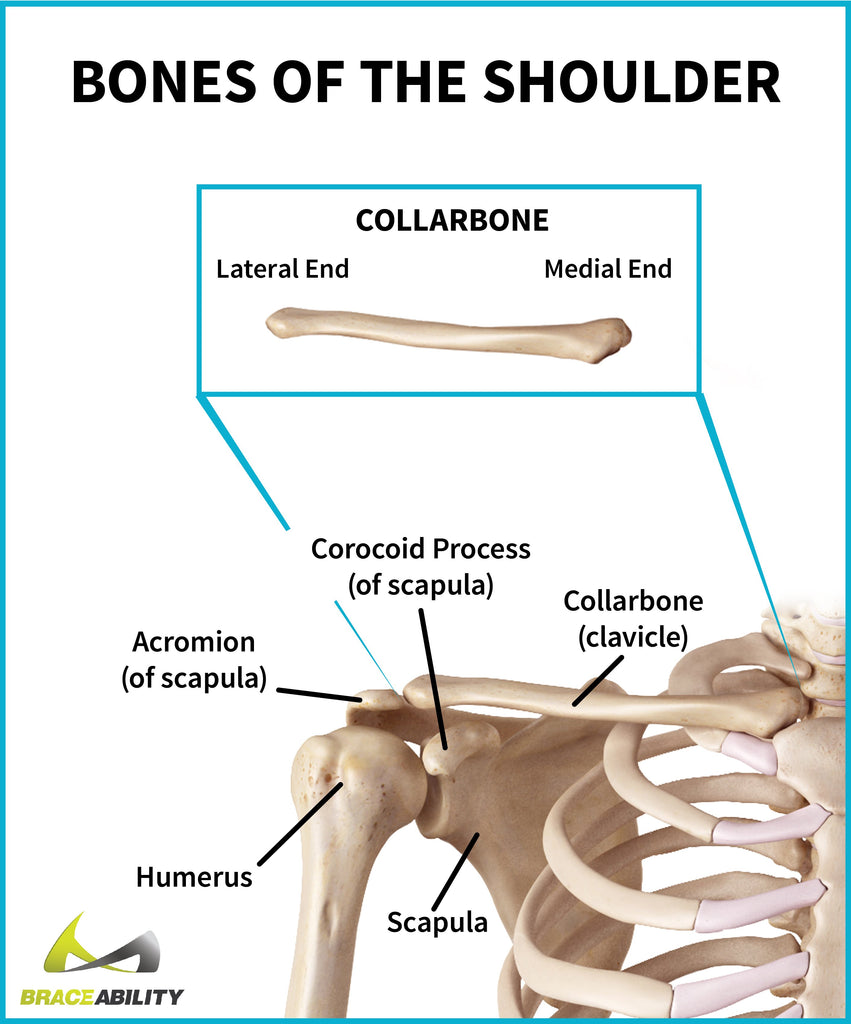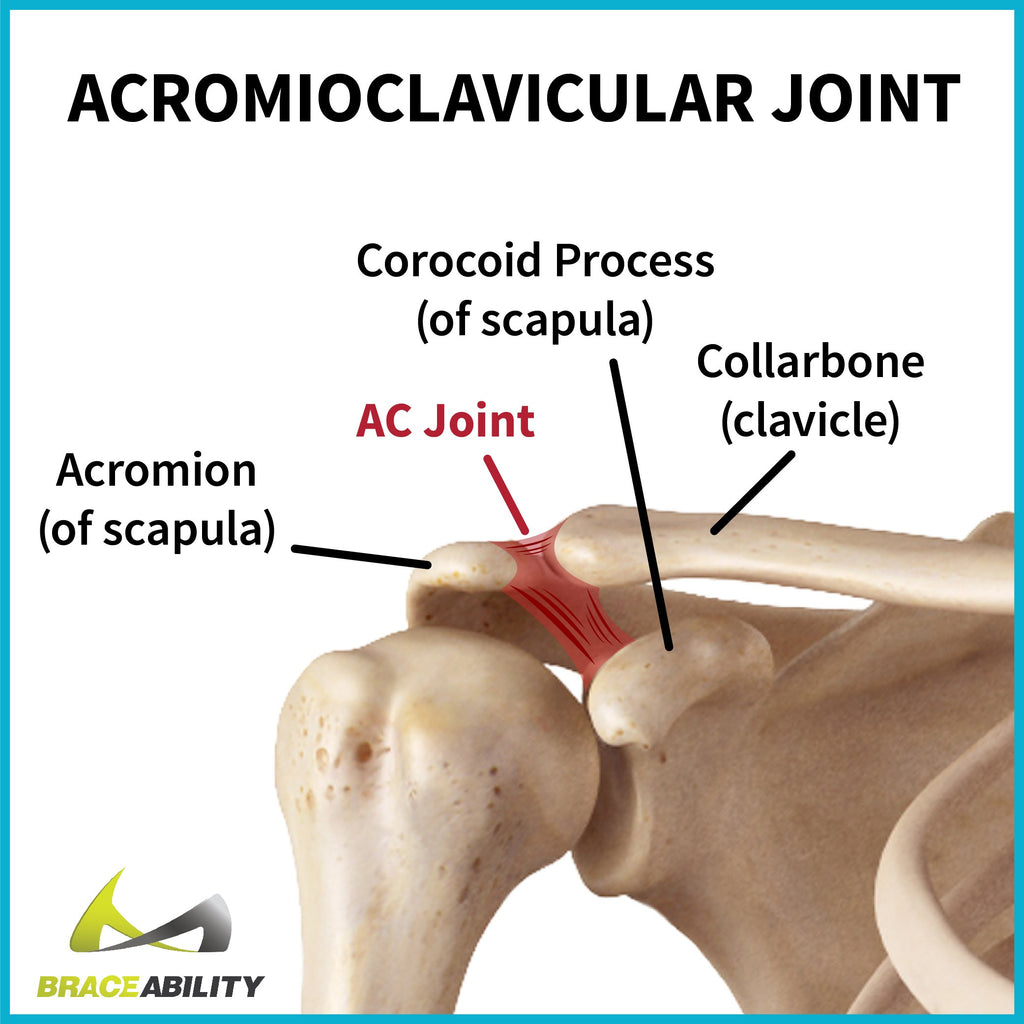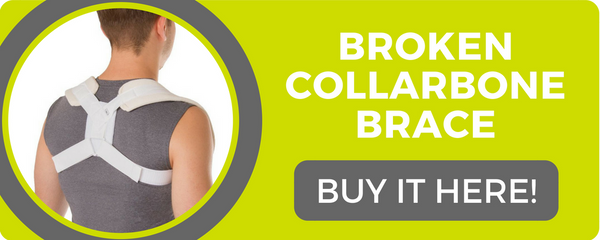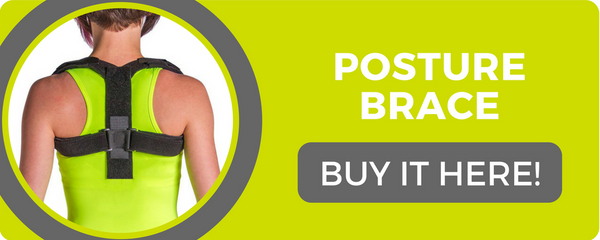Collarbone Pain
Your collarbone, also known as your clavicle, is the 13cm bone resting horizontally across your neck and shoulders. This bone, which is located above your ribs, attaches your sternum and shoulder blade. There are two different parts of the clavicle, the medial end, and the lateral end. The medial end connects to the sternum and the sternoclavicular joint. The lateral end connects the shoulder bone and the acromioclavicular joint.

As you may feel at the upper part of your chest, your clavicle is easily exposed because it lies close to your skin. This proximity makes the clavicle prone and susceptible to trauma such as fractures, arthritis, and infections.
There are many different functions of the collarbone. Along with attaching several different muscles, it keeps the scapula in place, enabling the arm to move freely. The clavicle also serves as protection for the neurovascular bundle of the upper arm.
What Is Causing My Clavicle Pain?
Are you experiencing pain in your collarbone? There are many different reasons/problems that would cause pain in your collarbone or clavicle.
Collarbone Fractures
This is one of the most common causes of pain in the collarbone. There are many different ways that fractures can occur including falling on an outstretched hand, falling on your shoulder or a direct blow to the clavicle bone. These fractures can occur at any age, even a newborn baby during delivery could injure this bone.
There are two types of fractures, compound or simple. A simple fracture is a break in the bone with any damage to the other organs around the clavicle. Whereas a compound fracture is a break in the bone that damages other organs, plus it may break through the skin.
Q: How do you know if it’s a fracture?
A: Symptoms of a clavicle fracture is a pain in your upper chest and shoulder area, especially when you’re moving around. There also can be an obvious deformity in the shoulder, if severe. Other symptoms include swelling, bruising, tenderness in the shoulder or collarbone area, and dizziness.
Q: How would I treat a fracture?
A: Depending on the severity of the fracture, immobilization of the arm and shoulder is recommended. By using a figure 8 clavicle support or shoulder immobilizer sling, the bone will not be able to move and it will help stabilize the area while you recover.
Do you detect you have a fracture/break in your clavicle? BraceAbility has many products to help your specific condition.
Acromioclavicular Joint Injury
The acromioclavicular joint connects the three bones that are in the shoulder: the collarbone, the shoulder blade, and the humerus.

Ligaments surround this joint, when these ligaments are strained or torn, this can lead to pain in the collarbone area. Straining these ligaments is easier and more common than you think. By simply lifting an overweight box or bag can tear your ligaments. Besides that, a direct blow to the shoulder, or a force to the side of your body also can injure this ligament.
Q: How do I know if I injured this joint?
A: Symptoms include pain when you’re pulling, pushing, or reaching above your head.
Q: How would I treat this injury?
A: The suggested treatment option for this injury would be an arm sling or immobilizer. In addition, physical therapy or low strenuous exercises to help strengthen the ligaments.
Infections (osteomyelitis) of the Clavicle
Although this can be rare, infections in the clavicle area should be taken seriously and result in the collarbone appearing swollen. Infections in this area usually affect both of the clavicles plus the surrounding tissues and organs such as the lungs.
Q: What are they symptoms of an infection?
A: Symptoms of having an infected collarbone include fever, pain, swelling, redness, and warming.
Q: How do I treat the infection?
A: Usually, antibiotics help to ease and relieve the infection but in severe cases, surgery is necessary.
Cancer
Bone cancer is not common in the clavicle area, but should never be ruled out. Cancer could be formed in the collarbone or could’ve spread from another site, such as the lungs. Although this is rare, this is still important because the majority of these instances are malignant.
Q: How do I detect it?
A: Usually, swelling, and pain in the clavicle. Also, stiffness or inability to move the shoulder can be an indication.
Q: How do I treat this cancer?
A: Ultimately, it is up to your doctor's discretion based on the type, and degree of your specific cancer.
Acromioclavicular Joint Arthritis
Arthritis is a common condition that can develop in basically any joint that moves in your body. The acromioclavicular joint (mentioned previously), can develop arthritis from previous injuries that may have occurred in your collarbone or from general overuse over time.
Q: How do I know I have arthritis in this joint?
A: Initially, pain in the top of the shoulder is the first indication of this condition. Reaching overhead or sleeping on your arm can also cause additional discomfort. You may also experience popping or clicking at the joint when you move it around that will indicate arthritis.
Q: What should I do?
A: Your doctor can diagnose this by using X-rays to see if there is any loss of space between the bones. Fortunately, you can ease your pain through many different conservative treatment options. Anti Inflammatory medications may help reduce your pain, physical therapy, and exercises help strengthen your bones. In addition, you may want to wear a posture brace or shoulder stabilizer to alleviate pressure on that joint. If severe, surgery is another option available to help remove part of the collarbone that is causing the tension on the AC joint.
Sleeping
Another cause of collarbone pain is sleeping in the wrong position. Although you move around at night without any control, you may wake up with irritation in the lower neck and collarbone area.
Q: How do I know I’m sleeping on it wrong?
A: You might be pressing on your nerves while you sleep, causing the pain and irritation.
Q: What can I do?
A: To help ease your pain after you wake up from a night's sleep, take precautionary methods to help prevent this. During the day, wear a posture brace to help lift the extra strain on your muscles. Also, position extra pillows surrounding your neck and back area to help reduce the amount of tossing and turning throughout the night.
Thoracic Outlet Syndrome
Thoracic outlet syndrome, or TOS, is when the nerves in your thoracic area (right between your collarbone and the ribs) become pinched. This is caused by injuries, overuse, or repetitive motion, drooping shoulders, and an abnormal rib cage (having an extra rib, etc.)
Q: How do I know it’s TSO?
A: Symptoms of this syndrome include pain or tingling, numbness in your arm or hands, swelling, aching, and cold or pale arms. This can occur on one side, or both sides of your collarbone. It is diagnosed through X-rays, blood tests, or an MRI.
Q: How can I treat it?
A: You can treat it through physical therapy sessions and anti-inflammatory medications. If your pain doesn’t subside or if it increases, surgery will then be used to help treat this condition.
How Can I Tell If My Child Has Fractured Their Collarbone?
Since children are constantly moving or running around, they are more susceptible to injuries in their arms, legs, and especially collarbones. Fractures are the most common collarbone injuries that occur in children when they fall on their shoulder or on an outstretched hand. As mentioned previously, newborns are also prone to fractures in the clavicle as they are being born.
How can you tell if your child has a broken or fractured collarbone? Symptoms include:
- Swelling
- Tenderness or bruising
- Pain when your child moves his or her arm or shoulder
- Popping or cracking sound when they move
- Slumping of the shoulder
- A bulge or bump at the site of break/injury
Healing time for children and adolescents differs from adults. For children, healing time for collarbone fracture can be as fast as 3-4 weeks.
If your child has experienced a break or fracture to the clavicle, it is recommended to:
- R.I.C.E: Rest, ice, compression, and elevation treatment to help reduce the pain and swelling
- Shoulder/clavicle supports: Use a clavicle support brace or pediatric back brace to help immobilize the injured area
- Physical therapy: Schedule an appointment with a physical therapist to help strengthen the muscles of your child’s shoulder, arm, and back
- Medications: Anti Inflammatory medications or talk to your doctor about other medicines








